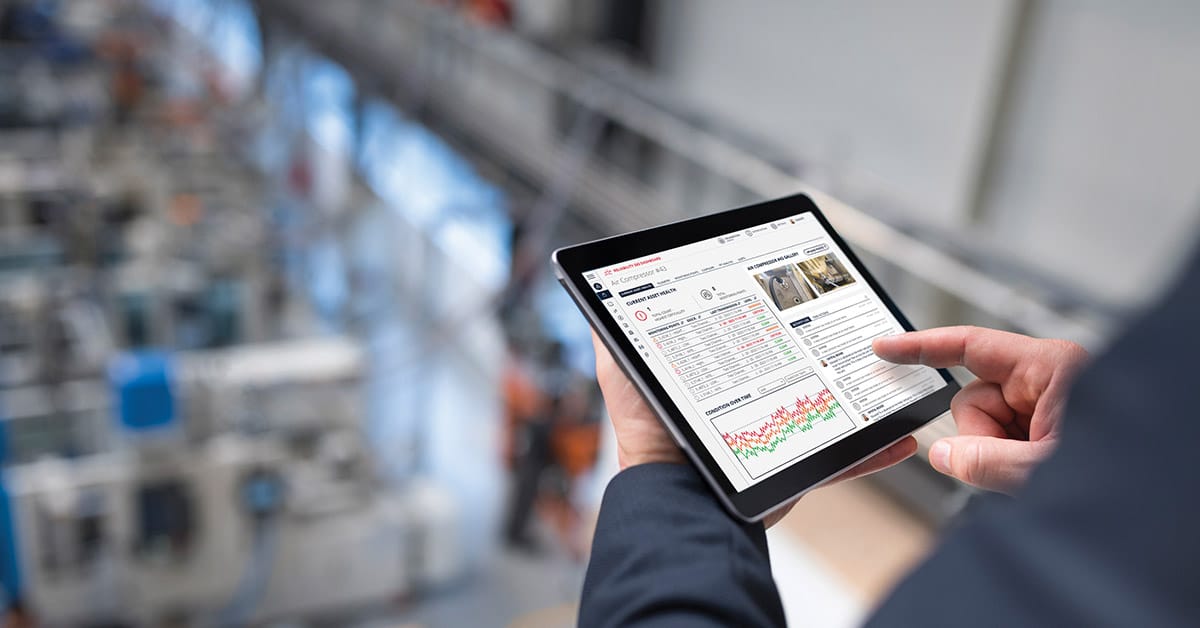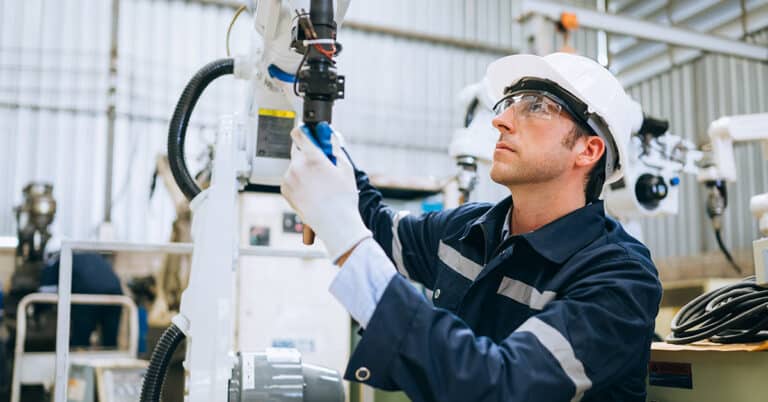Surprises are rarely a good thing in manufacturing. This is especially true when it comes to downtime caused by unexpected equipment failures. Manufacturers have a lot riding on their ability to keep their systems functioning smoothly, which is why so many of them have invested in machine health monitoring (MHM).
As the technology becomes more sophisticated and available, the market for these solutions only continues to grow. The emergence of artificial intelligence and machine learning technologies was one of the most significant machine health monitoring trends of 2024 and brought new capabilities and innovations to this space. There’s every reason to believe the market will continue to grow and evolve as these and other advancements become more commonplace. The coming year is expected to bring new developments on this front and improve manufacturers’ ability to keep track of their equipment even further. Read on to learn more about the machine health monitoring trends that are expected to shape the industry in 2025.
Machine health monitoring growth in 2024
The machine condition monitoring market is experiencing remarkable growth, driven by the need for predictive maintenance and the proliferation of Industry 4.0 technologies. According to a report by MarketsandMarkets, the global machine condition monitoring market size is projected to reach $4.7 billion by 2029, at a CAGR of 8.3% from 2024 to 2029. This expansion is fueled by the escalating demand for real-time monitoring solutions to optimize asset performance and minimize operational disruptions.
Drivers: One of the primary drivers propelling the machine health monitoring market forward is the increased adoption of Industrial Internet of Things (IIoT) and Industry 4.0 technologies. These transformative paradigms leverage advanced connectivity to enable seamless communication between machines, facilitating proactive maintenance strategies. Additionally, the integration of data analytics and machine learning algorithms has revolutionized condition monitoring, empowering organizations to harness the power of big data to predict and prevent equipment failures before they occur. As manufacturers continue to discover the benefits of predictive maintenance for improving uptime and enhancing production, machine health monitoring should continue to gain prominence throughout the industry.
Challenges: Despite the promising prospects, the machine condition monitoring market faces several challenges. One of the most significant is garnering buy-in from facilities, as skepticism persists over whether the benefits outweigh the costs. Many organizations are apprehensive about investing in new technologies without tangible evidence of return on investment. Moreover, there is a shortage of skilled technical experts proficient in implementing and managing machine health monitoring systems. Connecting machinery to the Industrial Internet of Things also introduces an element of risk in terms of data security, and manufacturers will need to take steps to ensure they have a strong cybersecurity protocol to keep them safe. Addressing these challenges requires concerted efforts to demonstrate the value proposition of these solutions and invest in workforce development initiatives to bridge the skills gap.
The most significant machine health monitoring trends for 2025
Sensors and IoT
Sensors form the heart of machine health monitoring, enabling the collection of real-time data on equipment performance and condition. This technology took several leaps forward in 2024, with sensor accuracy, durability and capability all receiving improvements. Wireless sensors also became more common, giving manufacturers greater flexibility in their placement. In 2025, it’s anticipated that there will be a proliferation of advanced sensors capable of monitoring numerous metrics, from temperature and vibration to pressure and fluid levels. These sensors, coupled with the Internet of Things (IoT) connectivity, facilitate continuous monitoring and enable predictive maintenance strategies by providing early warnings of potential failures. With 5G networks becoming more the norm, the coming year should see improved data transmission speeds and greater reliability, as well.
Cloud-Based Solutions
Cloud computing has emerged as a game-changer in the realm of machine health monitoring. Cloud-based solutions offer scalability, flexibility and accessibility, allowing organizations to store and analyze vast amounts of data without the need for on-premises infrastructure. Moreover, cloud platforms facilitate seamless integration with other enterprise systems, enabling data-driven decision-making and enhancing operational efficiency. It’s expected that hybrid cloud models that mix on-site and cloud resources will influence the number of manufacturers who take advantage of this technology in 2025. Additionally, advanced security features for cloud-based condition monitoring systems should make their adoption much more common throughout the industry. Increased integration with AI and machine learning services in the cloud along with cloud-edge orchestration for real-time analytics also are anticipated to have an impact in the coming year.
AI-Driven Data Analytics
Artificial intelligence (AI) and machine learning algorithms are revolutionizing machine health monitoring by unlocking actionable insights from data streams. These advanced analytics techniques can identify patterns, anomalies and correlations in large datasets, enabling predictive maintenance and optimizing equipment performance. By harnessing AI in predictive maintenance, organizations can transition from reactive to proactive strategies, minimizing downtime and maximizing productivity.
Digital Twins
Digital twins are virtual replicas of physical assets or processes that enable real-time monitoring, analysis and simulation. They play a pivotal role in machine condition monitoring and predictive maintenance by providing a holistic view of equipment health and performance. By simulating various operating scenarios, organizations can optimize maintenance schedules, enhance reliability and mitigate risks, ultimately driving operational excellence. In 2024, this technology was integrated into IIoT platforms, providing deeper insights into equipment condition and behavior. This allows technicians to test scenarios without putting physical assets at risk, and it’s easy to see how digital twins could become extended to entire production lines or even facilities in the near future.
AR & VR Technology
Augmented reality (AR) and virtual reality (VR) technologies are transforming the way machine health data is visualized and interpreted. These immersive technologies enable technicians to overlay real-time sensor data onto physical equipment, facilitating remote monitoring and troubleshooting. AR and VR solutions enhance training programs, allowing technicians to gain hands-on experience in simulated environments and improve their skills without risking equipment downtime. They also make it possible for remote experts to assist on-site technicians in real-time as if they were in the same room together. In 2025, these practices will become more widespread, especially as AI integration enables the intelligent overlay of pertinent data.
Standards, Regulations and Compliance
As the machine health monitoring landscape evolves, there is a growing focus on standards, regulations and compliance frameworks to ensure the reliability and accuracy of monitoring systems. Organizations must adhere to industry-specific standards and regulatory requirements, such as ISO 55000 for asset management and OSHA regulations for workplace safety. Complying with these standards means organizations can mitigate risks, enhance asset reliability and maintain regulatory compliance. The new year is expected to bring new challenges, such as stricter data privacy laws that impact the collection and storage of information by IIoT systems. This also could be the year the industry sees the development of international standards of interoperability.
Cybersecurity in Machine Health Monitoring
Connectivity brings numerous advantages to manufacturers when it comes to monitoring machine health. However, it also introduces the risk of data breaches. This means all manufacturers who embrace this technology should make cybersecurity a high priority. In addition to adopting secure communication protocols and strong encryption, manufacturers also should invest in employee training to ensure technicians always use best practices when working with these platforms. One of the biggest potential MHM trends for 2025 is increased collaboration between manufacturers’ IT and operational technology teams.
Addressing market challenges
Although the machine health monitoring market holds immense potential, addressing key challenges is essential to realizing its full benefits.
Education and Awareness: Many facilities remain unaware of the transformative impact that machine health monitoring can have on their operations. Educating stakeholders about tangible benefits such as reduced downtime, enhanced safety and increased productivity is crucial for garnering buy-in and overcoming skepticism. Industry associations, educational institutions and technology providers play a vital role in disseminating knowledge and fostering awareness about the value proposition of machine health monitoring solutions.
Cost-Effectiveness: Cost remains a significant barrier for organizations when considering the adoption of machine health monitoring solutions. To address this challenge, technology providers must offer flexible pricing models and demonstrate a clear return on investment. Showcasing the potential savings from reduced maintenance costs, minimized downtime and improved asset lifespan can help organizations justify the initial investment in these systems.
Skills Gap: The shortage of skilled technical experts proficient in machine health monitoring technologies poses a formidable challenge for organizations. To bridge this gap, training programs, certification and workforce development initiatives are essential. Collaboration between industry stakeholders, academia and government agencies can facilitate the creation of training programs tailored to the specific needs of the machine health monitoring industry, better ensuring a steady supply of qualified professionals.
Embracing the future of machine health monitoring
The machine health monitoring market is at a pivotal juncture, poised for exponential growth and innovation. By leveraging advanced sensor technology, IoT connectivity, AI-driven analytics and immersive technologies, organizations can unlock opportunities for predictive maintenance, operational excellence and sustainable growth. To thrive in the digital age, organizations must embrace digital transformation in manufacturing, invest in cutting-edge solutions, and cultivate a culture of innovation and continuous improvement. By harnessing the power of machine health monitoring, organizations can navigate the complexities of the modern industrial landscape with confidence, agility and resilience.
As one of the leading providers of industrial technology solutions for maintenance, ATS stands ready to help your organization make the most of these systems. If you want to learn more about everything we can do to help you stay in front of the latest condition monitoring trends, get in touch with us today.






